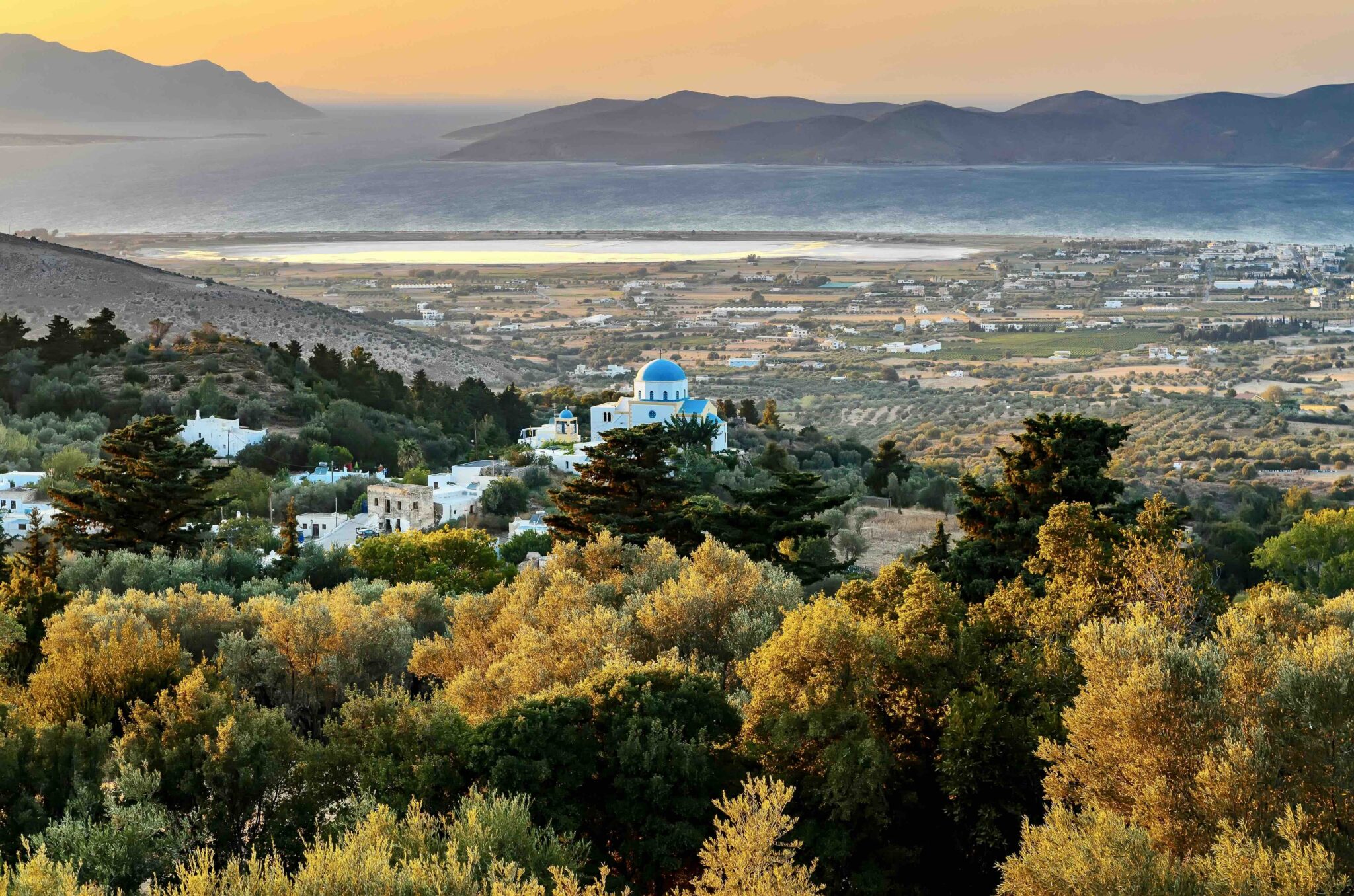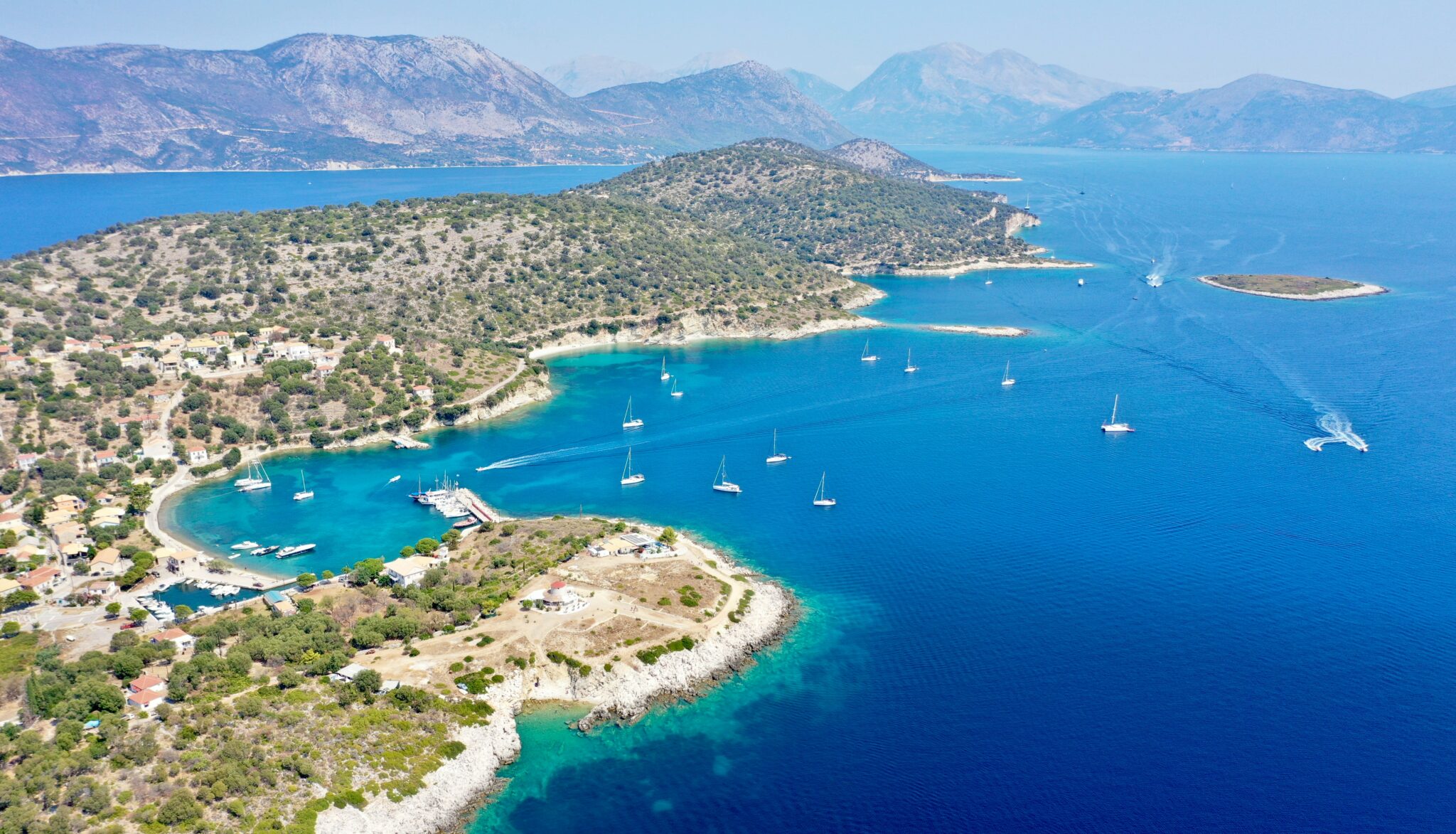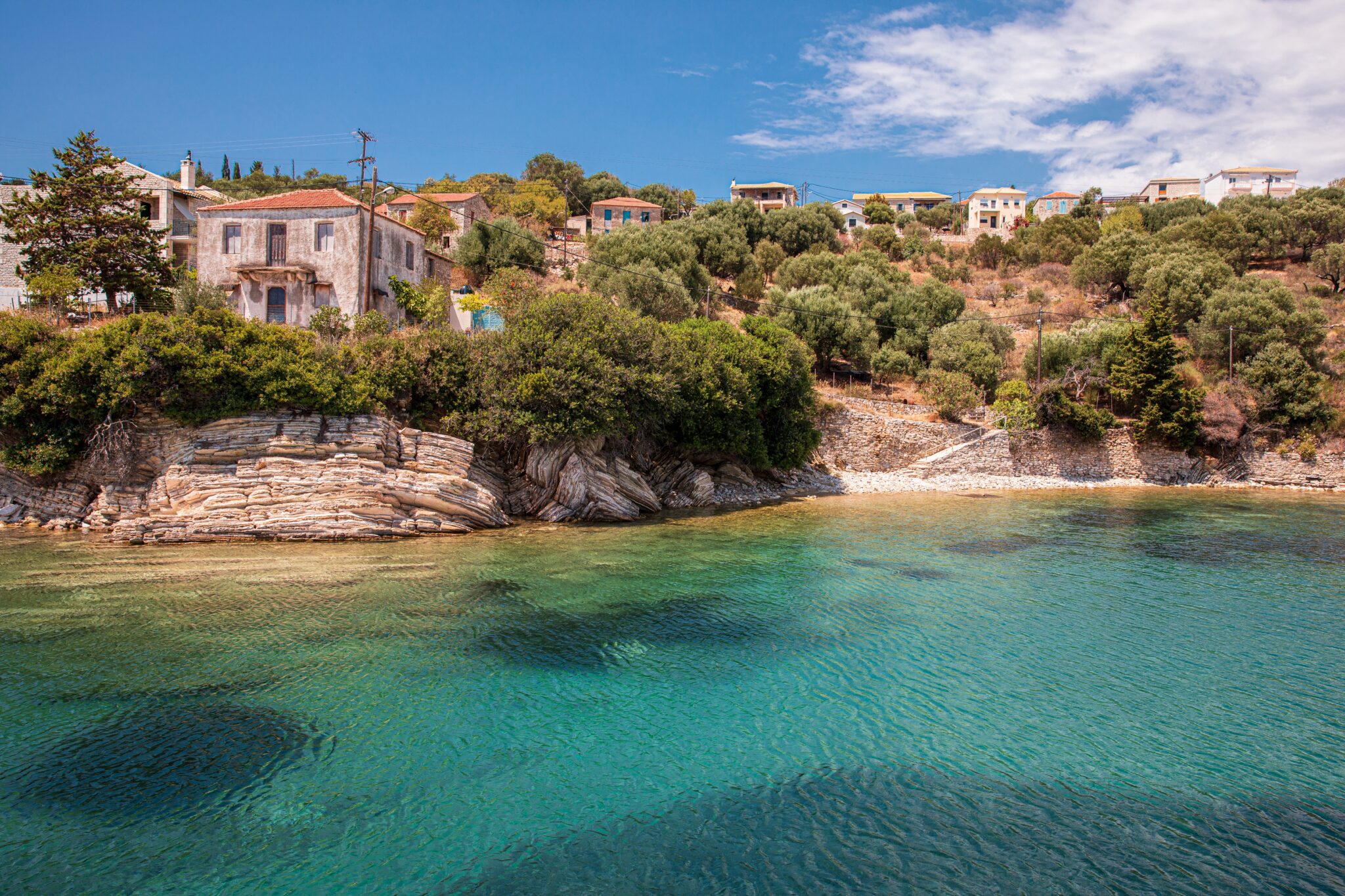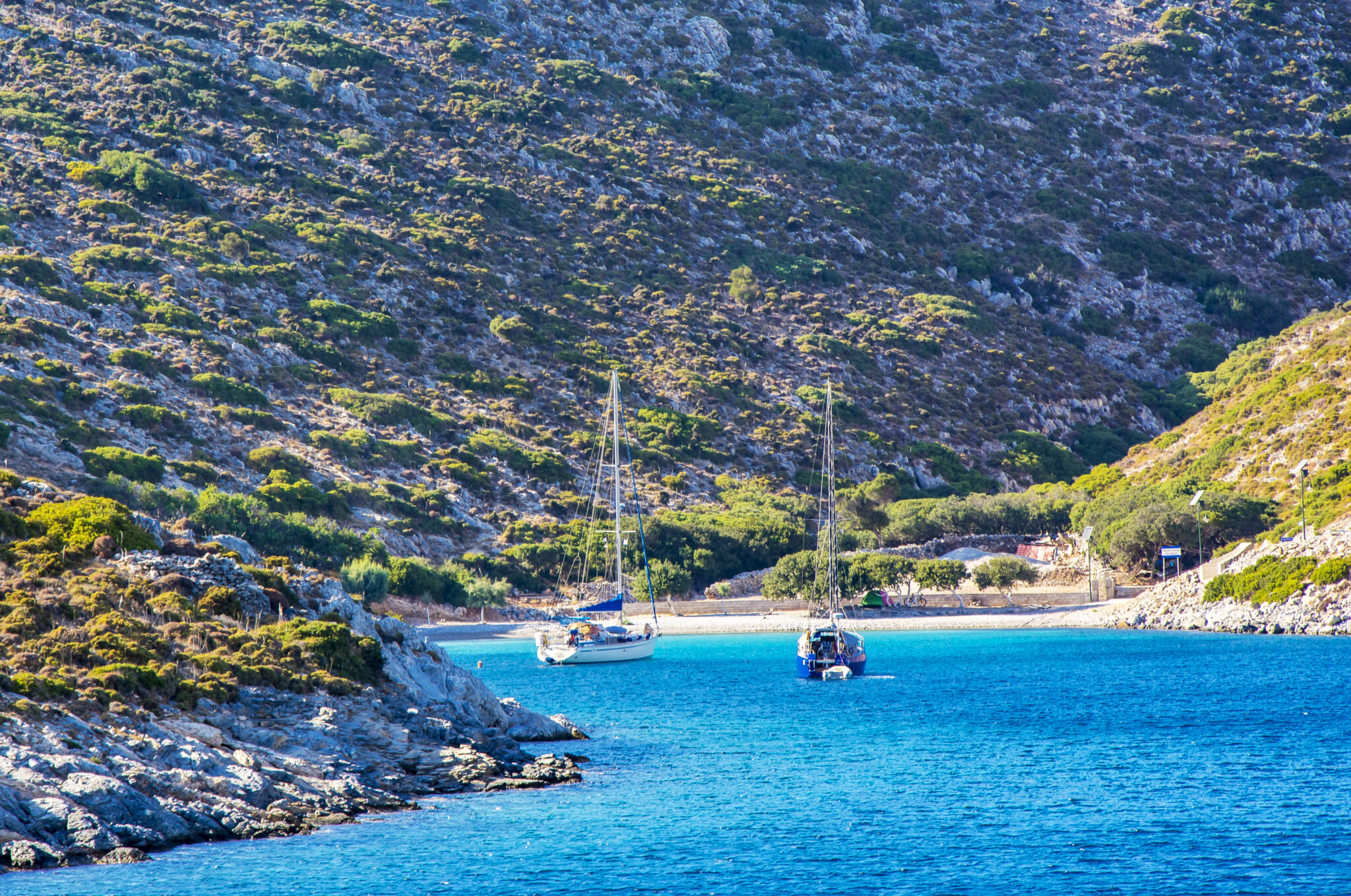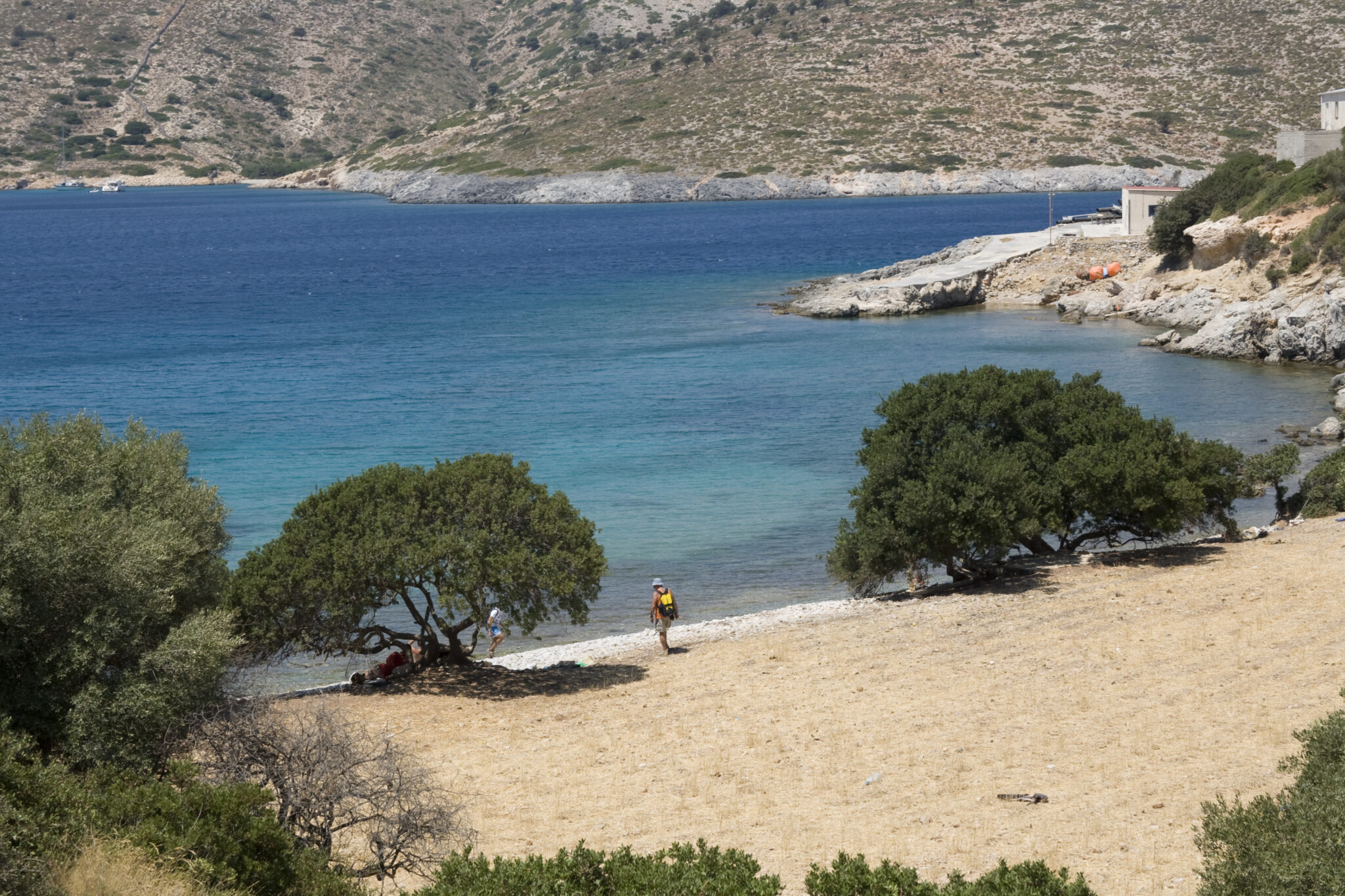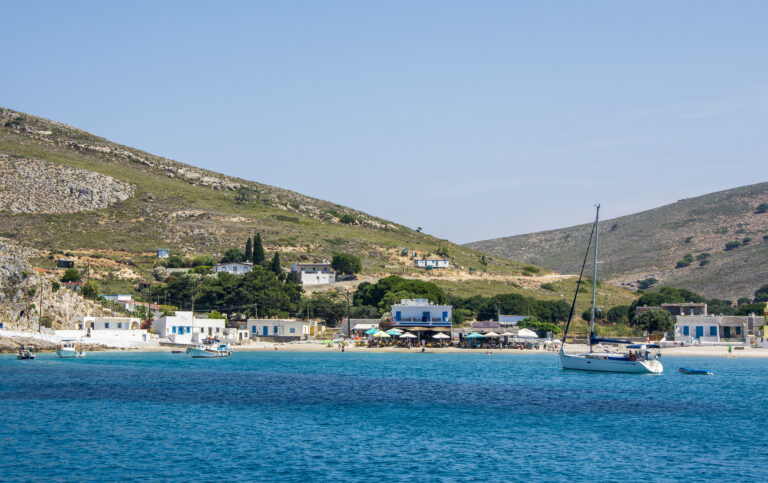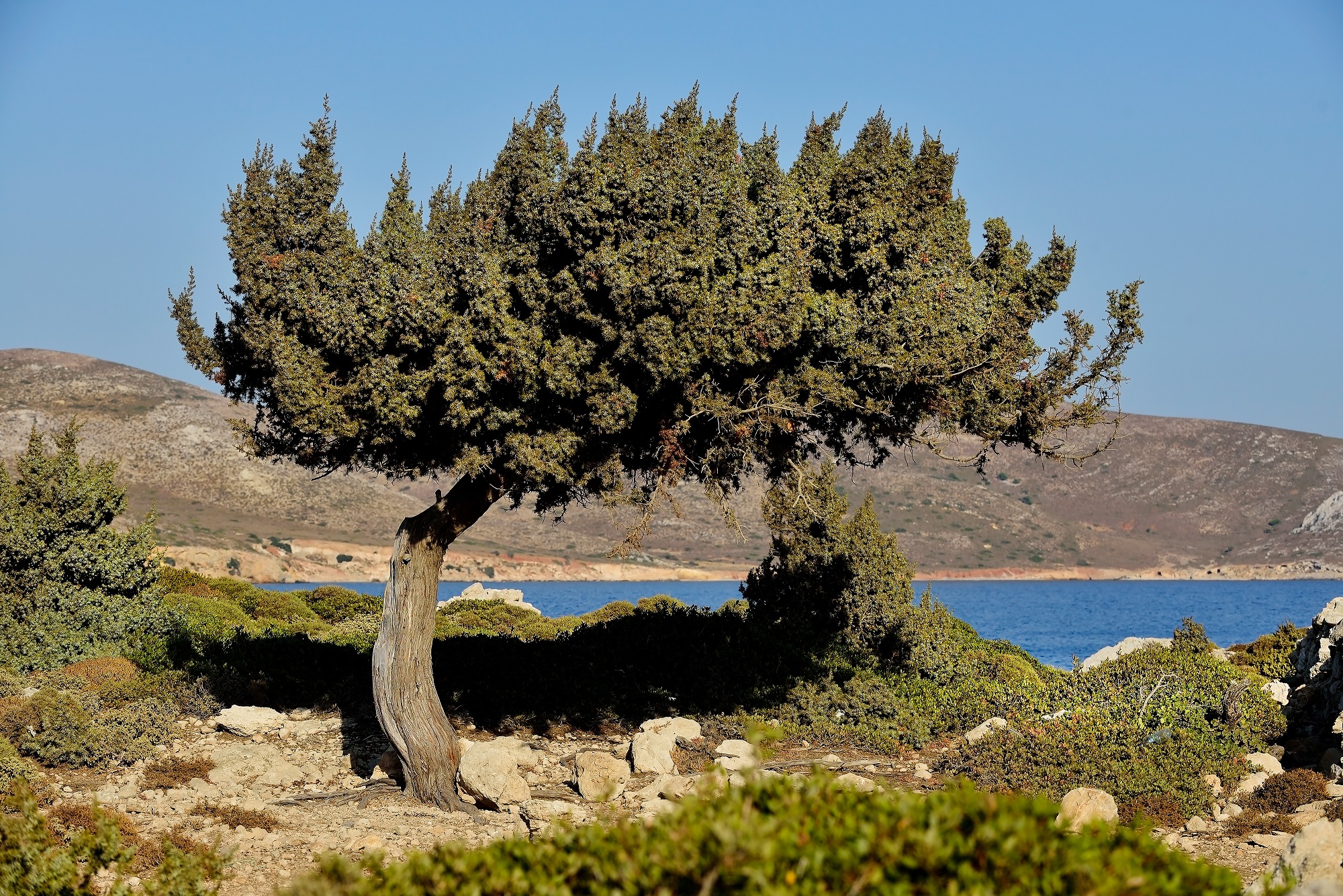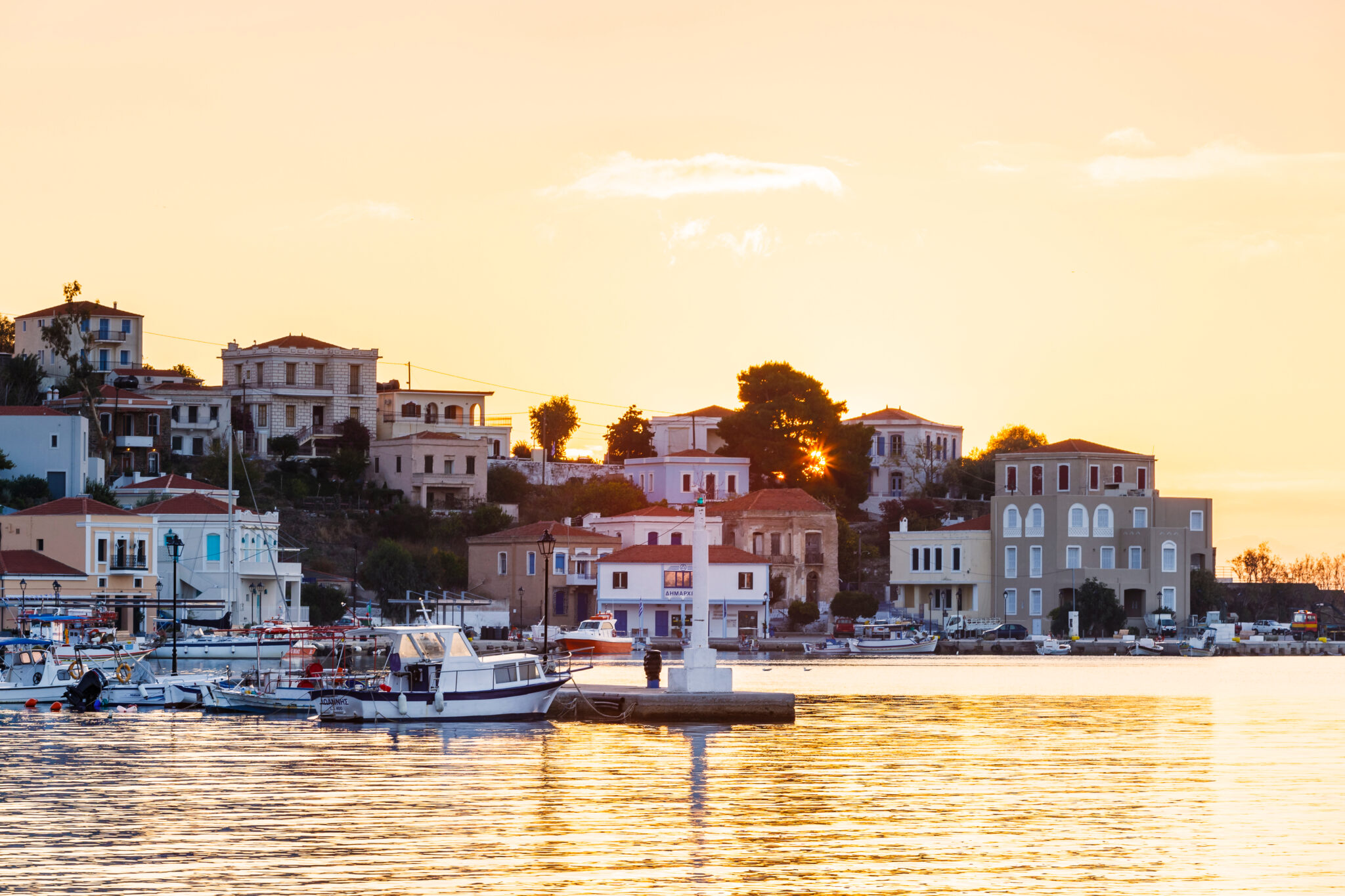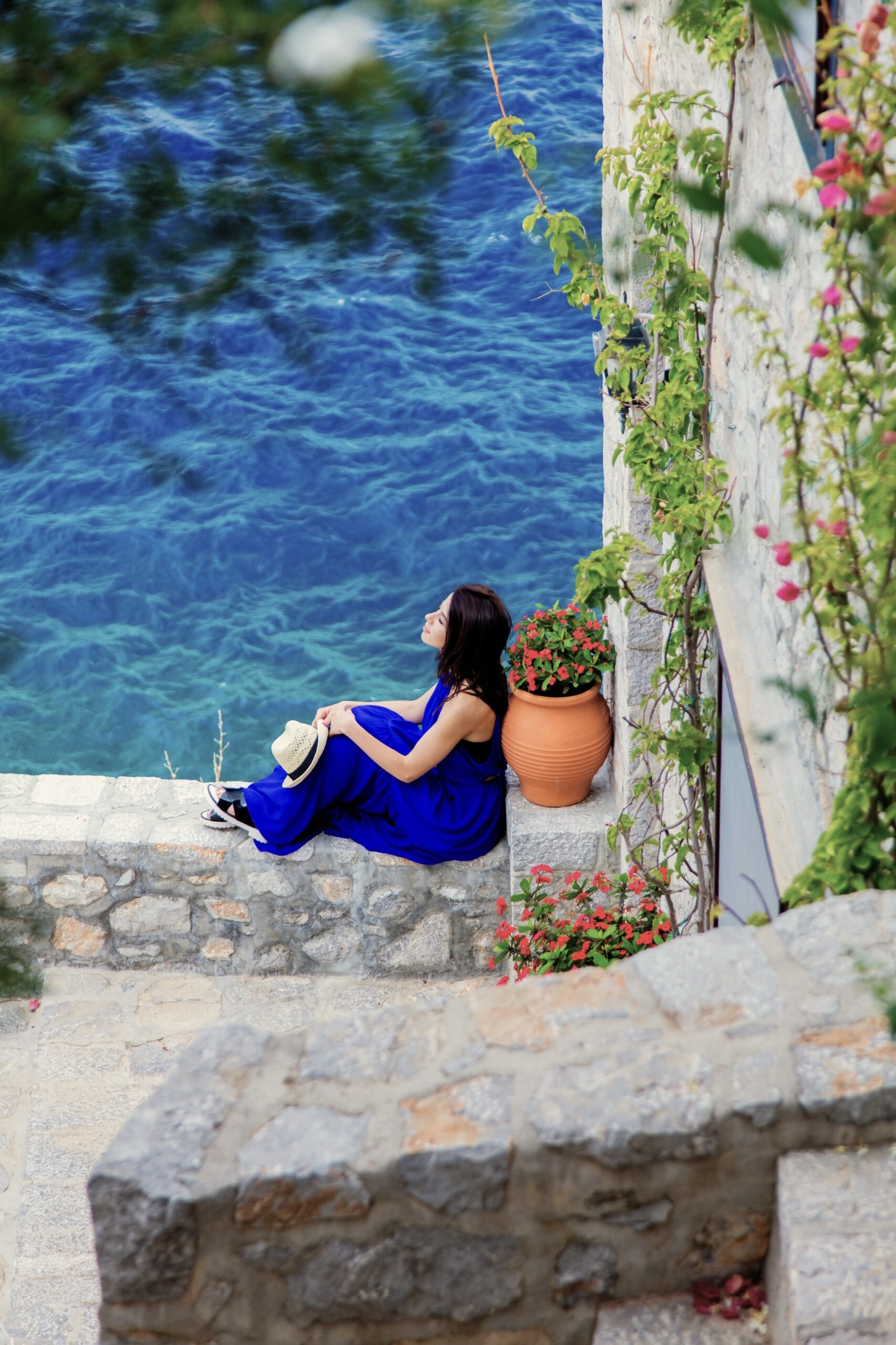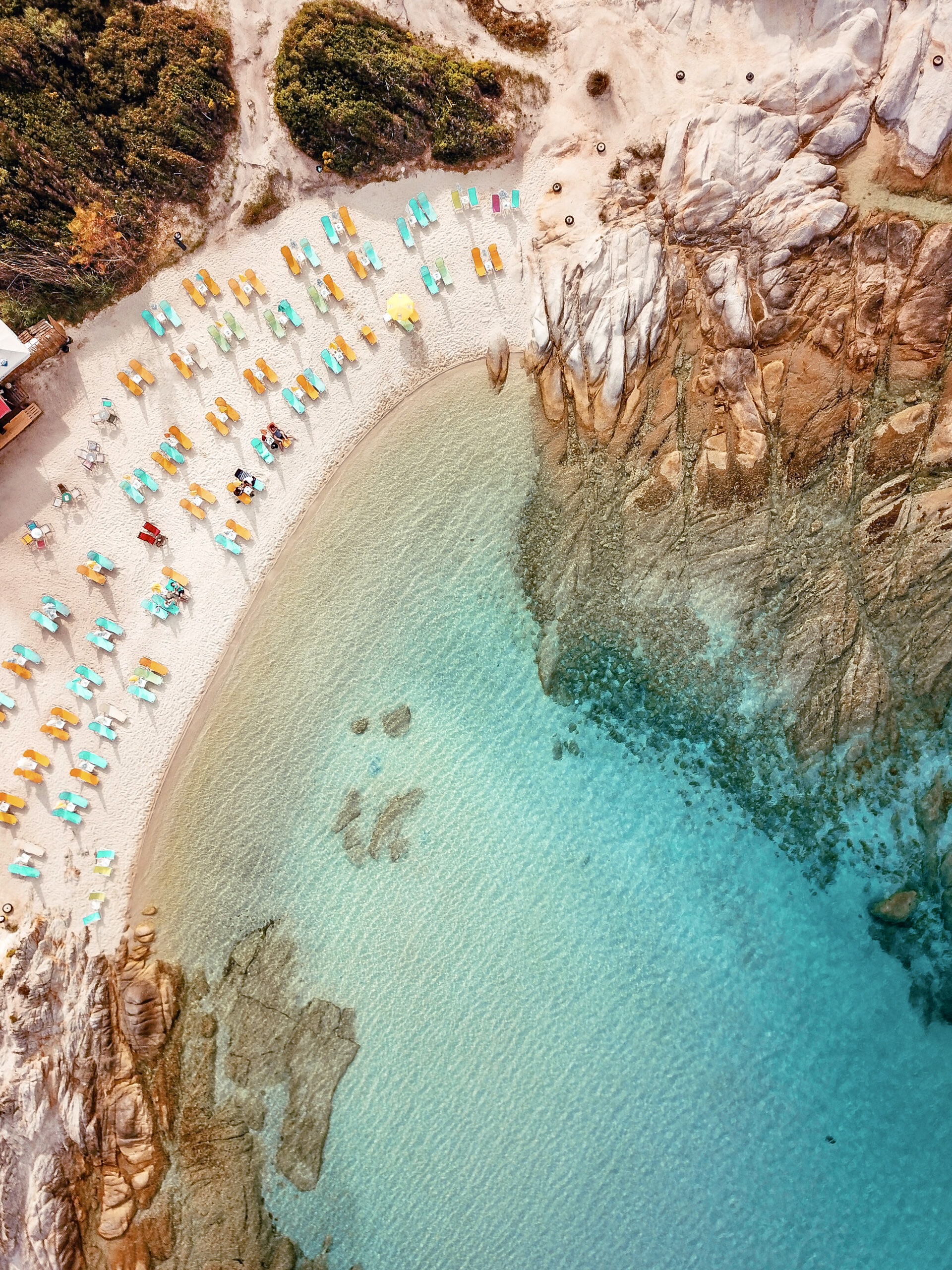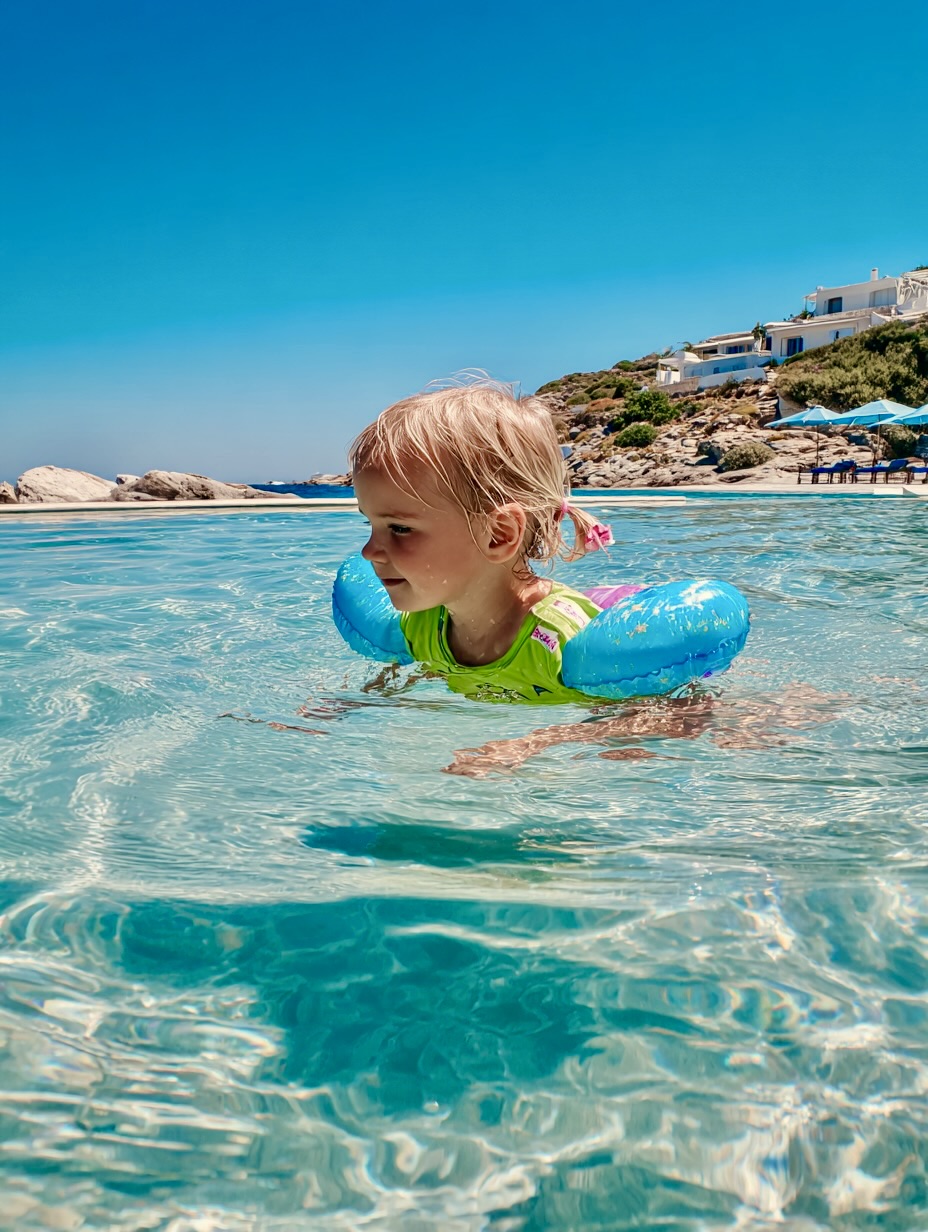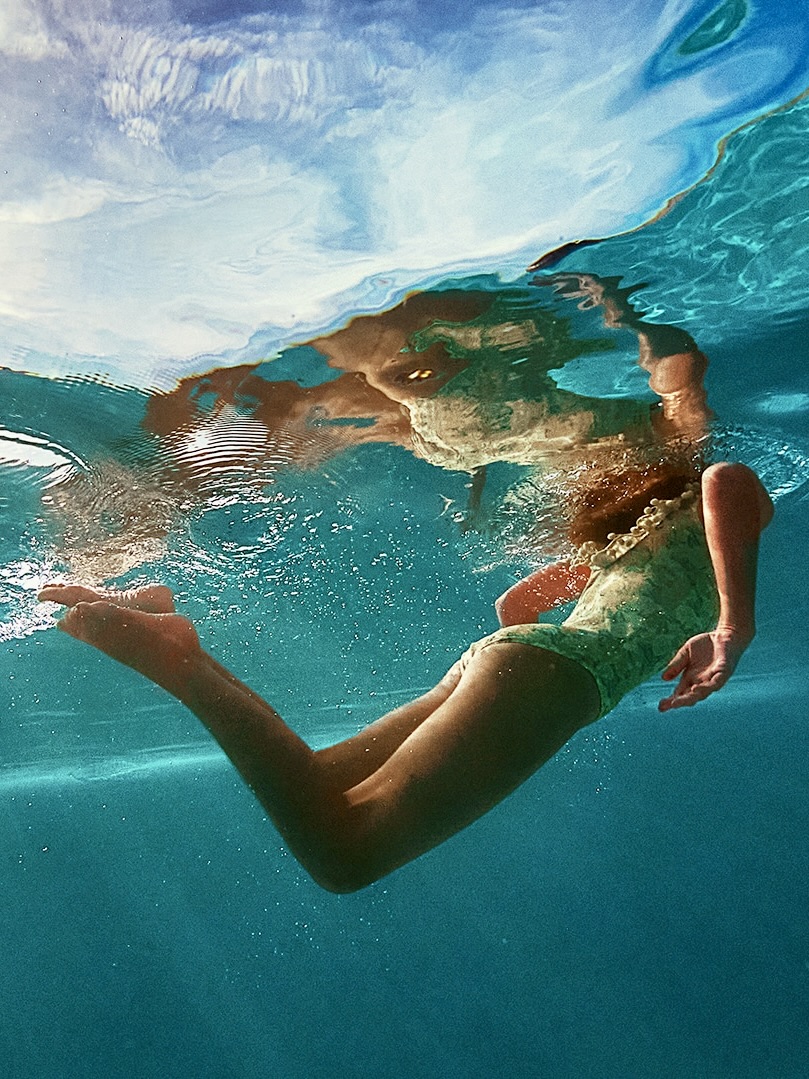Mid-August in Greece arrives like a cymbal crash: cicadas crescendo, sun refracts into a hard, theatrical light, and ferries empty onto islands already gleaming with people. Some travelers want the great Greek opera: tables pushed together under plane trees, a nightly parade along the harbor, the full choreography of August. Others are after a quieter meter: mornings that begin with the sound of halyards ticking against masts, afternoons stitched with swims, evenings when the only crowd is constellations. For them, the Aegean and Ionian still hold out pockets of soft volume.
Consider four islands that read like footnotes in a summer of headlines: places where the timetable is set by currents rather than clubs, and where the geography invites you to move slowly. In the Ionian, Kastos is a whisper of an island before the mainland lifts into Aetolia-Acarnania, a green thread in a sea of blues, known to sailors who anchor for the night and to almost no one else. Cross to the far eastern edge of the map and the Dodecanese scatter into small points: Agathonisi, three whitewashed hamlets and a coastline dimpled with coves, wears its history lightly, Hellenistic fortifications now keeping guard over silence. Nearby, Pserimos measures just 14 square kilometers and seems to exhale all day long; you choose a beach the way you would choose a chair in the shade and stay until the light leans gold. North of Chios, the Oinousses cluster surfaces, maritime to its core, its main island walking you past neoclassical homes toward water that looks hand-polished.
Each island has its own tempo and texture. Kastos is amphitheater views and footpaths that end in pebbled coves; the west coast is a line of rock ledges reachable only by boat, the east a run of easy swims. Agathonisi asks you to navigate by chapel domes and stone waymarks; rent a small boat and you will find scalloped inlets where the water shifts from bottle green to sapphire in a single breath. Pserimos keeps its promises close: a harbor beach when you cannot be bothered to go far; a necklace of small bays when you can; a chapel on the islet of Plati if you crave the feeling of being nearly nowhere. Oinousses offers a different quiet, civil, cultivated, sea-minded, where a Nautical Museum houses models of ships that once charted the family fortunes, and hilltop trails deliver the wide-screen horizon that has long been both compass and comfort for those who leave and return by water.
The practicalities are part of the pleasure. Reaching Kastos means a hop from Preveza to Mythikas and then a short crossing, enough transit to shake loose the city from your shoulders. Agathonisi arrives only by sea, ferries stitching it to Samos, Patmos, Leros and beyond, which is exactly right for a place that seems to have opted out of hurry. Pserimos is a morning boat from Kalymnos or Kos, the perfect scale for a day bag and a paperback, though you will want more than a day. Oinousses is an hour off Chios, its schedules shaped by island logic rather than demand curves, and that is the point: you make your plans around the boat, and your days around the light.
What unites them is the sensation, rare in a month when Greece is at full beam, of space. Space on the beach and in your calendar, in the lanes and in the water, in the conversations that collect at cafe tables where no one is rushing you along. They are not ascetic; they simply refuse the performance of summer. Instead, they trade on smaller pleasures: the clean architecture of a swim at noon; the taste of tomatoes that have not traveled; the shade under a tamarisk that remembers last year’s wind. You come for the quiet and leave with a map of sounds: goat bells on Kastos, a skiff engine on Agathonisi, the soft clink of cutlery on Pserimos, flag halyards on Oinousses.
In a season when Greece is an invitation shouted across continents, these islands are the aside spoken just to you. Follow it.
01
Kastos
In the Ionian Sea west of mainland Greece, opposite Mythikas in Aetolia-Acarnania and near Kalamos and Meganisi, Kastos is a rare find for lovers of isolation. Reached by small boat from Lefkada or Mythikas, it’s a discreet favorite among sailors yet remains blissfully off the mainstream tourist map.
The island’s single settlement is split in two: one cluster hugging the port and another, the so-called “upper village,” perched slightly higher with sweeping views over the Ionian. Accommodation is limited to a handful of rooms, a few café-bars, and small tavernas. Cars are scarce; you get around on foot or by boat. Beaches on the eastern shore are the easiest to reach, while the wilder, rockier west can only be accessed from the sea. When you’re not swimming, wander the narrow lanes, linger over coffee with a view, and let the friendly locals fold you into their slow-paced world.
Getting There
Fly into Preveza-Aktion National Airport, served by domestic and seasonal international flights. From there it is about 50 minutes by road to the port of Mythikas, where small ferries and caiques make the 50-minute crossing to Kastos. In summer, boats also run from Lefkada.
02
Agathonisi
On the opposite edge of the map, in the eastern Aegean, Agathonisi stretches across just 13 square kilometers and holds three settlements: Agios Georgios, the port, plus Mikro Chorio and Megalo Chorio. Cars are almost irrelevant here—the distances are made for walking.
Your days are measured in swims and sun-warmed strolls. The beaches—reached by footpaths or by boat—are left untouched by organized facilities, leaving nothing between you and the glittering sea. Whitewashed chapels crown hilltops, offering wide-open views of the Aegean. Hiring a small boat unlocks the island’s scalloped coastline of secret coves. History, too, has a quiet presence here: the archaeological site at Kastraki flourished during the Hellenistic period and still reveals remnants of a fortified harbor settlement, military quarters, a sanctuary, beekeeping facilities, and a workshop for producing the prized purple dye of antiquity.
Getting There
Agathonisi is reached only by boat. Ferries connect from nearby islands including Samos, Patmos, Leros, Kalymnos, Leipsoi and Chios. The sailing from Pythagorio in Samos takes just over an hour and runs several times a week. Crossings from Kalymnos or Patmos vary from two to three hours, depending on the route and vessel.
03
Pserimos
Out on the eastern fringes of the Aegean, Pserimos is built for slow, quiet holidays. With just 14 square kilometers to its name and a single harbor settlement, it wears its unhurried pace on its sleeve. Mornings begin with the hush of the island and a Greek coffee before deciding which beach will be your refuge for the day.
Some, like Avlakia right by the port, are a few sandy steps away; others—Panagia Grafiotissa with its crumbling chapel, Trevathia, Vathy, Tafos, Roussa, Glistra, and Marathounda—call for a short walk or a boat ride. The eastern and northern waters hide shipwrecks that lure divers, while to the west, the islet of Plati—with its chapel of Agios Nikolaos—makes a perfect day trip for those seeking even deeper solitude.
Getting There
Pserimos has no direct link to the mainland. The simplest route is via Kalymnos, which is served by ferries and flights from Athens and Kos. Small passenger boats make the 20-minute crossing from Kalymnos to Pserimos several times a day in summer. There are also boats from Mastichari on Kos, taking around 35 minutes.
04
Oinousses
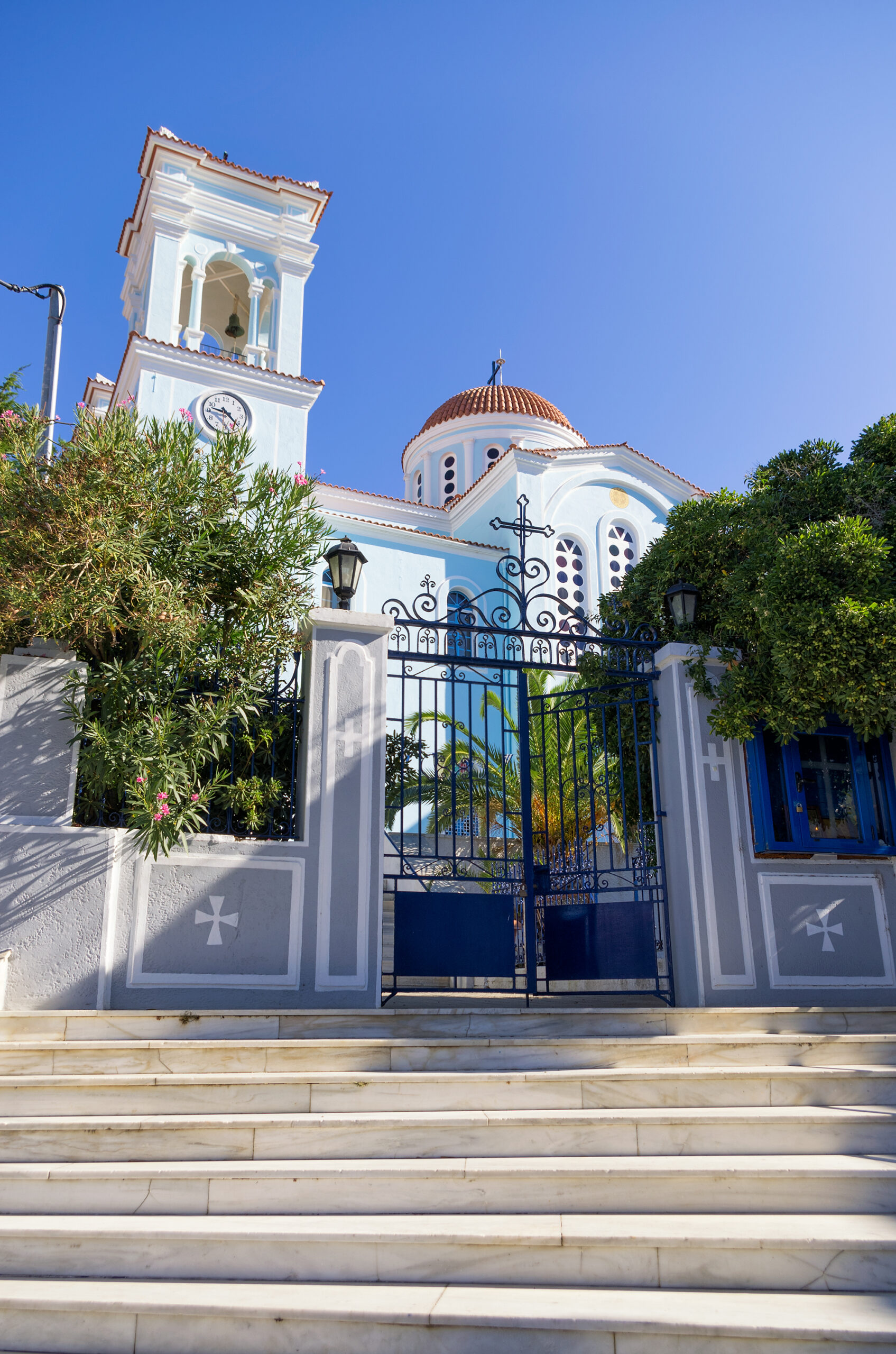
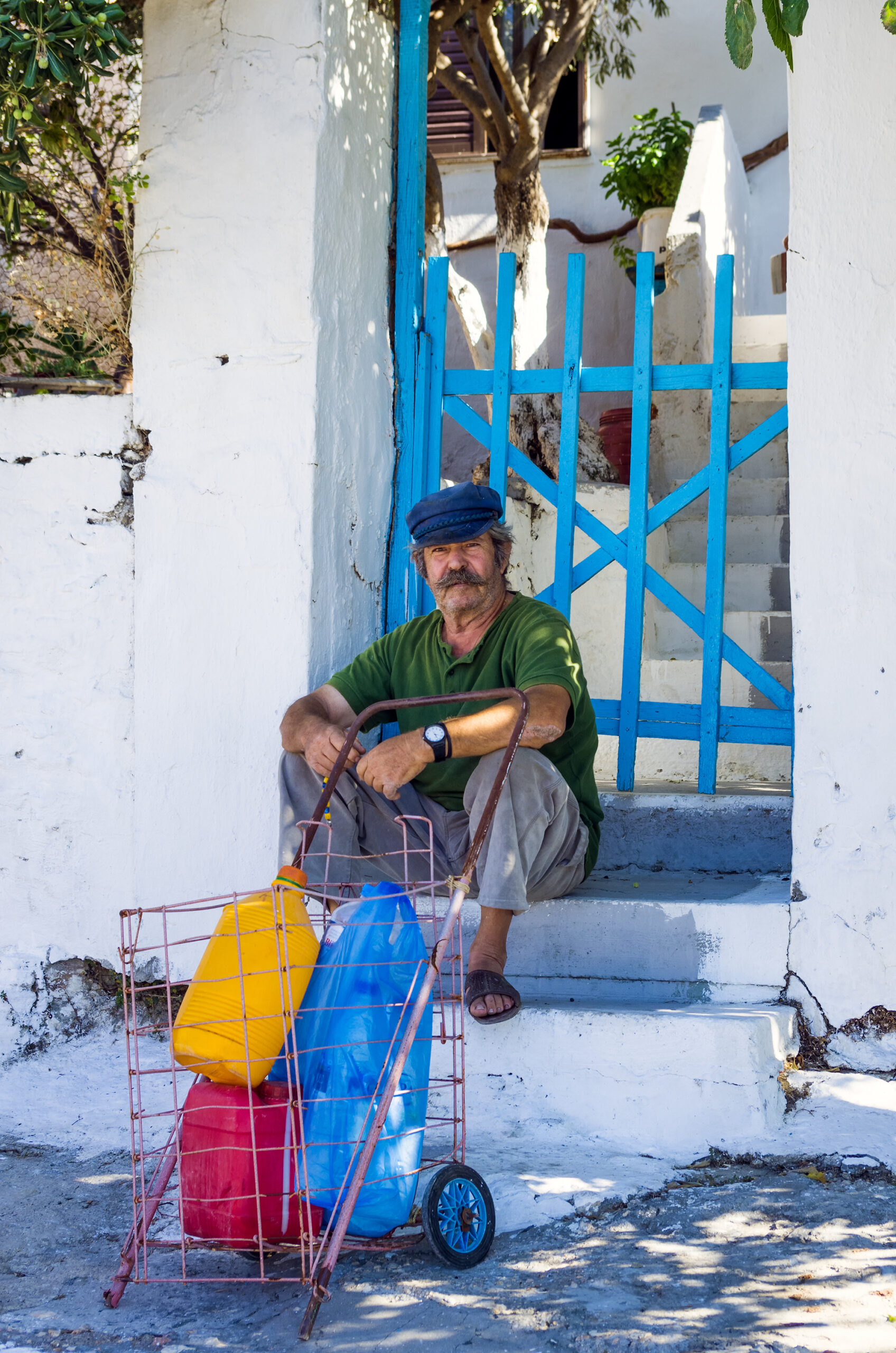
This small island cluster off Chios has saltwater in its veins—Oinousses is the birthplace of many of Greece’s famed sea captains. The main settlement curls around the port, where neoclassical mansions and traditional captain’s houses look out over the sea. With 15 square kilometers of land and around 800 residents, it’s the largest and most populated of this quartet, and a protected Natura 2000 site.
The archipelago counts nine islands and islets, but only Oinoussa—“Aignousa” to locals—is inhabited. Its beaches shimmer with clear water: Chochlakas and Katsikas to the north, Bilali, Fasoli, Apigano, Fokia, Fourkerou, Marmaro, Aliki, and Tselepí scattered around the coastline. After swimming, wander the uphill alleys, step inside the Nautical Museum housed in the Pantelis A. Lemos Mansion, and pay a visit to the church of Agios Nikolaos, adorned with seafarers’ votive offerings and home to a relic brought from Sicily in 2001.
For walkers, trails lead to chapels with sea-spanning views. The climb to the Stavros of Oinousses—a towering cross set high on a hill—rewards with a panorama that sweeps across land and horizon, a view that has guided sailors for generations.
Getting There
Oinousses is reached most easily from Chios, with daily ferries making the one-hour trip. There are also direct sailings from Piraeus twice a week, taking just under nine hours. Chios itself is connected to Athens by both air and ferry, as well as to several other Aegean islands.



